Mega sites

FRANCE
CREST
Integrated and automated Public Transport for passengers and goods
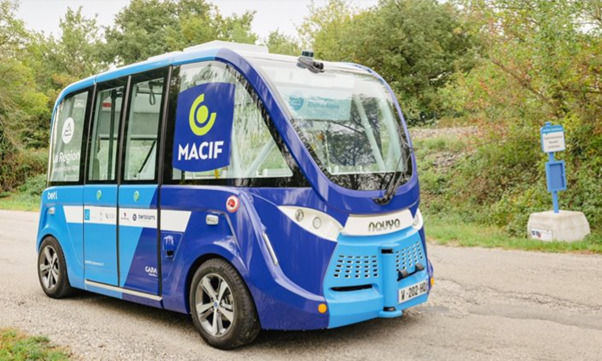
Vision
The Service
- Service fully in place and operating on regular basis despite the lack of heavy infrastructure for Lidar detection
- Free of charge usage for all, No prior booking, ride on the spot
- Safety driver always on board
- Shuttles in mixed traffic (cars, cycles, pedestrian, agriculture vehicles, …)
- Droid on pedestrian roads due to authorization not on open road
- Safety Operators and hypervision recruited and trained
- Hypervision remote center installed at 56 km away and connected
- Process between remote and field operations implemented
- Usage of own local mechanics garage for maintenance
- Tested hybrid usage of shuttles and droid
Fleet
-
3 * NAVYA (2 ARMA, 1 EVO), SAE-Level: 3+
-
1 * Twinswheel “ciTHy M“ model Droïd
Target Passengers
Residents (mainly elderly) and people without cars
The Route
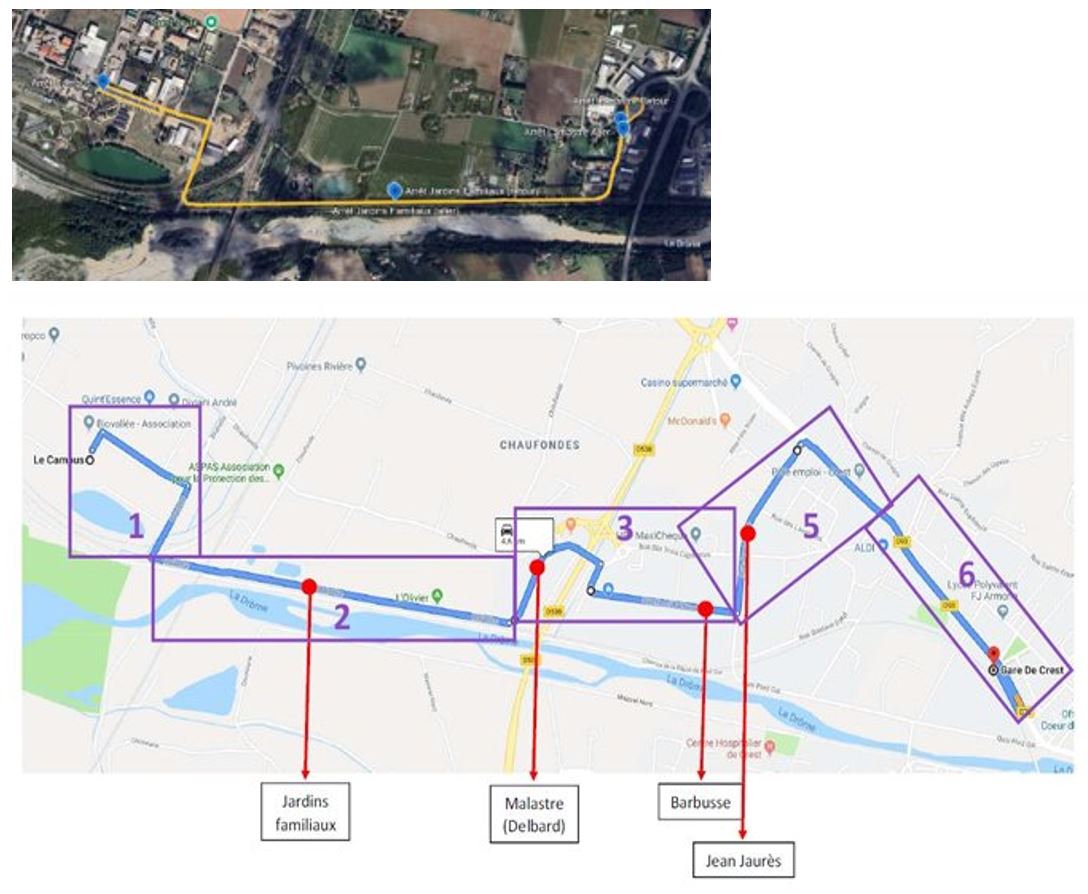
The route from Ecosite to the Malastre stop spans 2.1 km in mixed traffic, with 5 bus stops, 9 pedestrian crossings, a tunnel, 8 priority signs, and 1 major roundabout.
Key Feedback
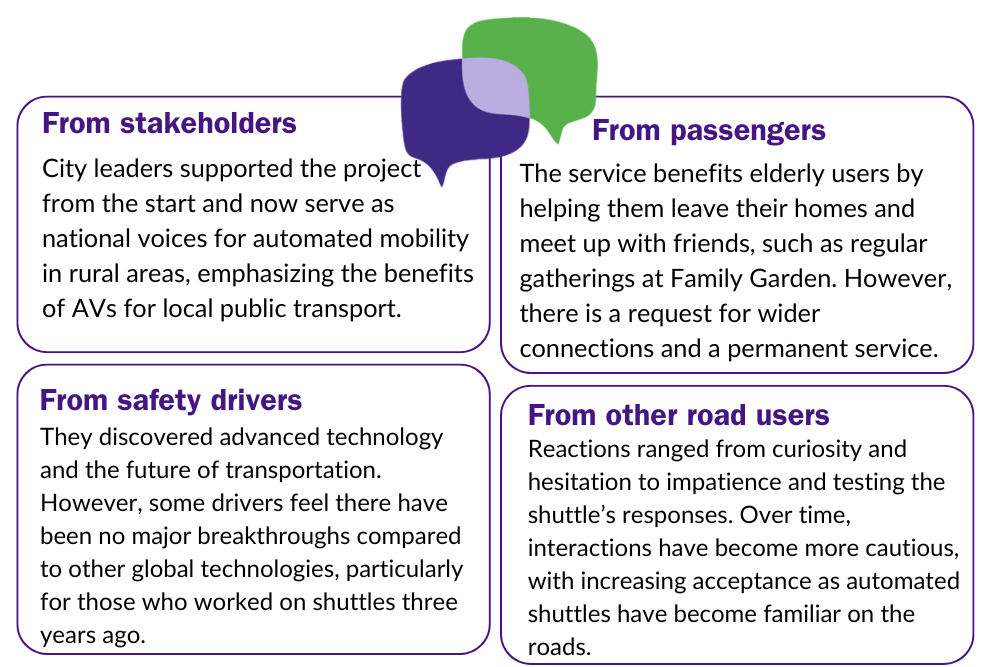
Challenges & Recommendations
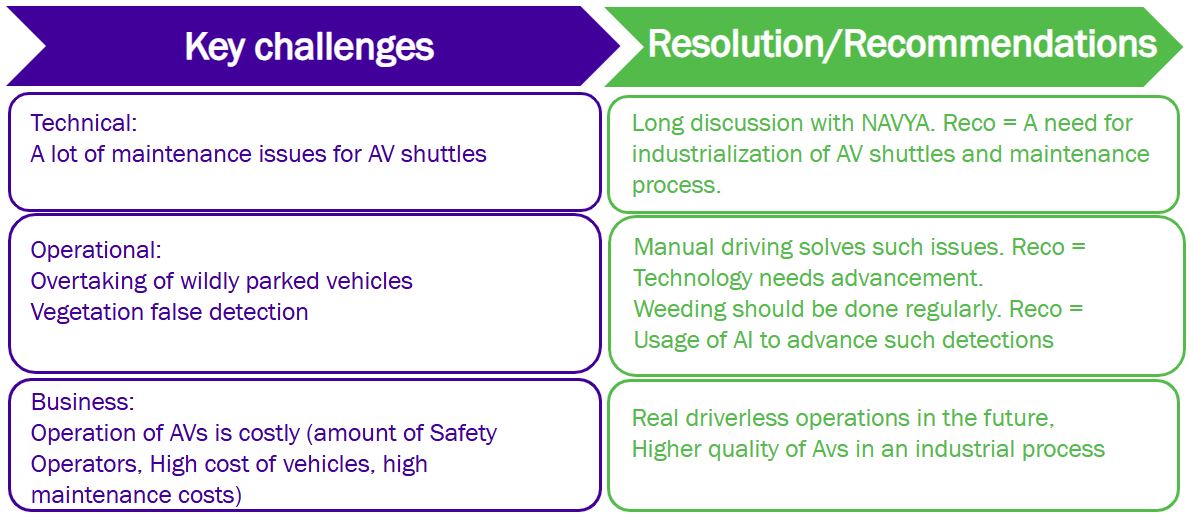
Use Cases
UC1.1: (normal traffic & environmental conditions)
UC1.2: (complex traffic & environmental conditions)
UC1.3: Interfacing non automated
UC1.4: Energy sustainable automated passengers/cargo mobility in Cities
UC1.10: Seamless autonomous transport chains of Automated PT, DRT, MaaS, LaaS
UC2.2: With different vehicle types
UC3.2: Big data/AI based added value services for Passengers/ Cargo mobility
Local Ecosystem
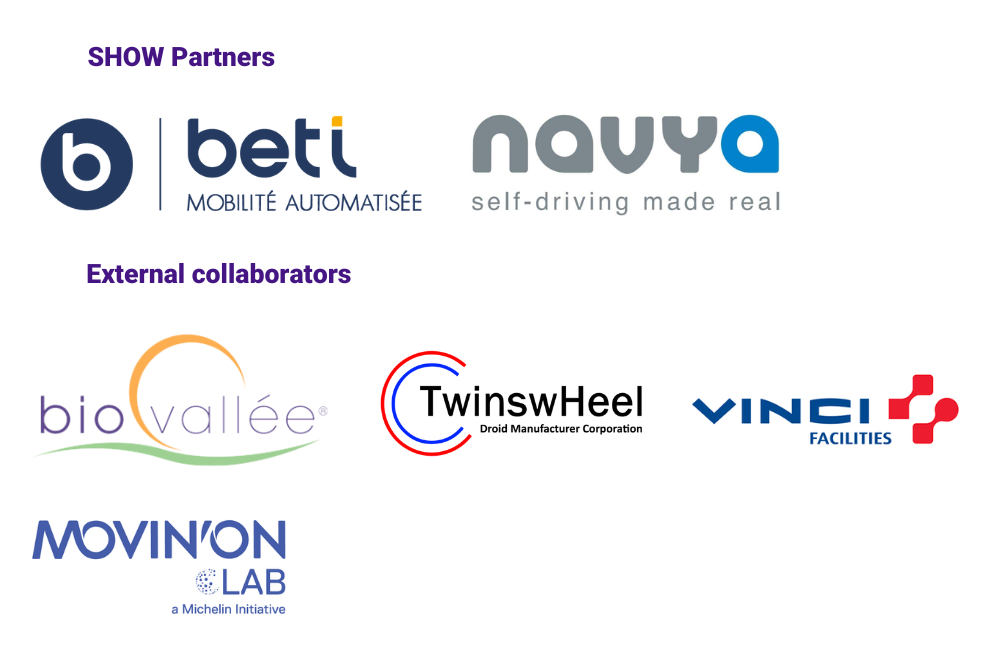
Legacy
The legacy of the SHOW pilot will continue with the RIMA project, which aims to expand the fleet to 7 automated vehicles and establish a consistent daily mobility service solely operated by shuttles. Additionally, beti will implement version 1.1 of its hypervisor for users and operators, applied across 4 controlled rural mobility services: daily, health, inclusive, and tourism.
LES MUREAUX
Operability of an autonomous shuttle fleet without on-board operator for a large private site
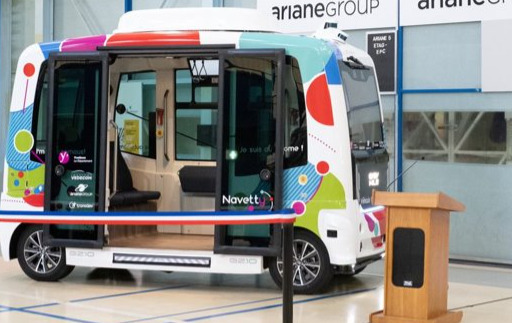
First project in Europe with 3 shuttles being operated without onboard operator in mixed traffic within a complex environment
Vision
Building on the Navetty project, the Les Mureaux site showcases a fully driverless shuttle service in an urban industrial setting without an onboard operator. This pilot advances regional goals in innovation, sustainable mobility, and infrastructure enhancement. Key focuses include remote supervision for centralized fleet management, connected infrastructure to improve safety and efficiency, and fully autonomous operations to develop expertise for future commercial services. This site is essential for demonstrating how autonomous shuttles can operate safely and efficiently, laying the groundwork for commercial deployment and sustainable urban mobility solutions.
The Service
- Free of charge
- No on-board safety operator
- Remote supervision station
- Roadside assistance car (full electric)
- Regular service or On-demand (ride booking app)
- Open road trial: on-board safety operator
Fleet
3 EasyMile EZ10-G3b autonomous shuttle (full electric, 12 passengers)
Target Passengers
ArianeGroup’s empoyees and visitors
The Route
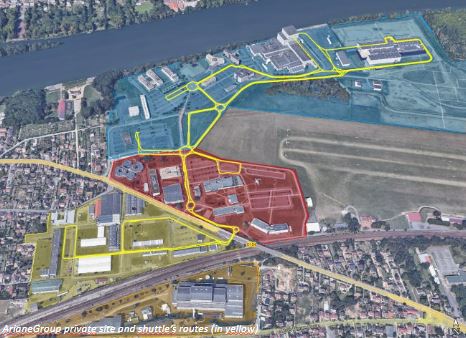
The route spans 8.5 km within a private, urban-like environment, connecting multiple zones across the site.
Key challenges
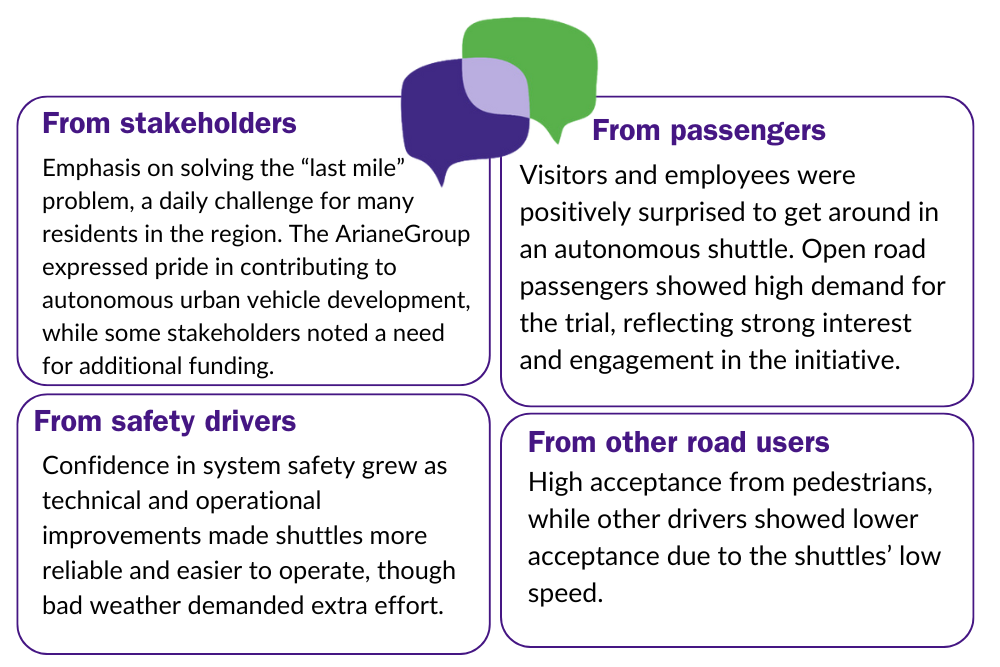
Challenges & Recommendations
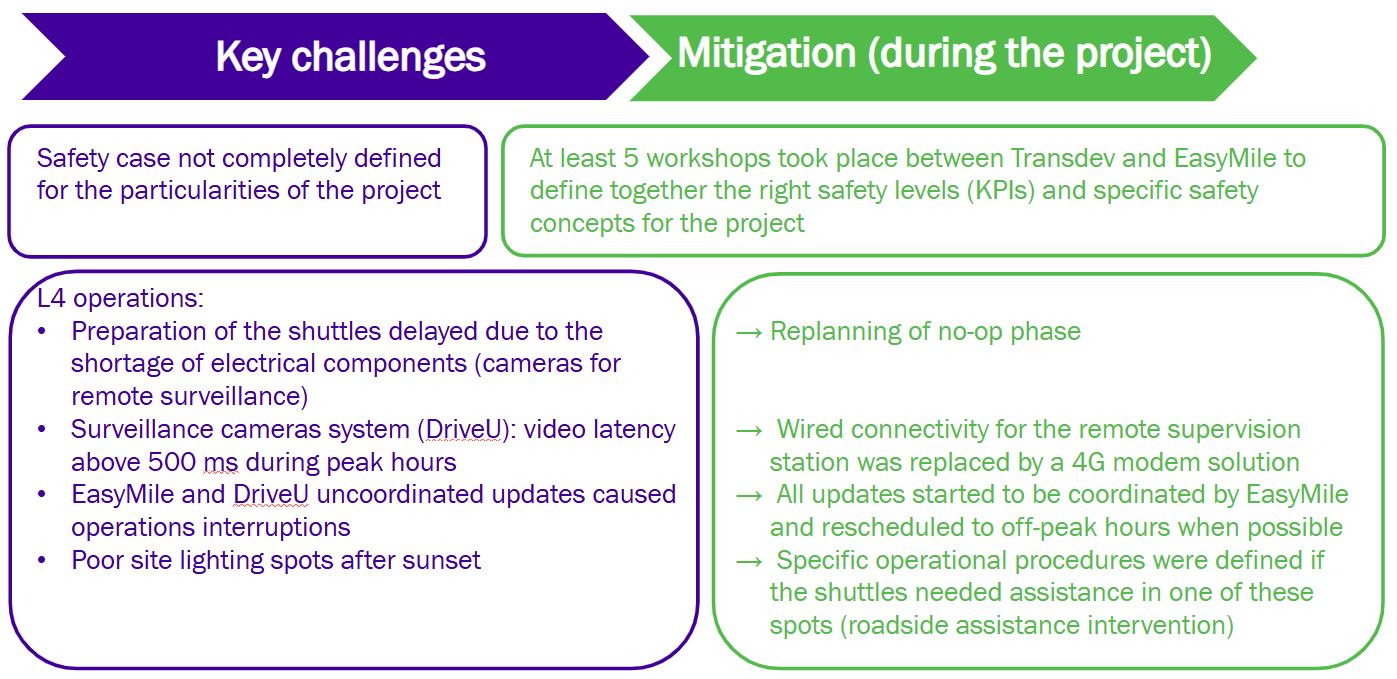
Use Cases
UC1.3 (Interfacing non-automated vehicles and travellers)
UC1.4 (energy sustainable)
UC1.6 (mixed traffic flows)
UC1.7 (connection to operation centre)
UC3.4 (automated services at bus stops)
Local Ecosystem
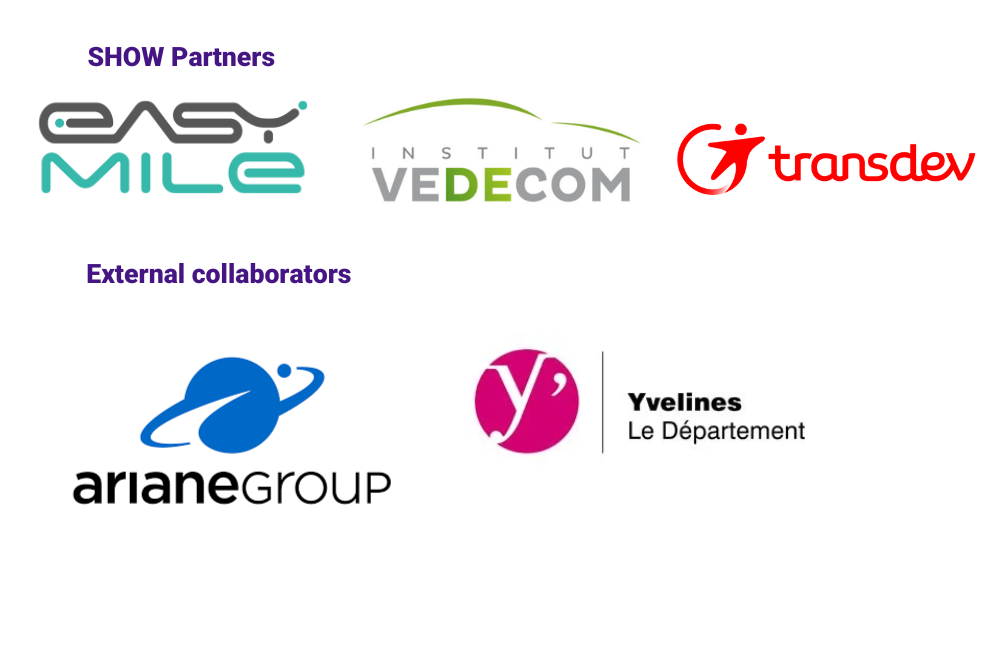
Legacy
The Les Mureaux project has successfully demonstrated the feasibility of SAE Level 4 operations for public transport, paving the way for future initiatives that can explore “eyes-off” remote operations and scalability with multiple shuttles. Consortium partners are eager to renew the project, highlighting the need for technology maturity and certification. Enhanced shuttles will aim for better performance on open roads, with higher speeds and reliability. Future expansions could connect key locations, such as the main train station to local recreation areas, while an Operation Command Center will support multi-site autonomous vehicle operations.
ESCRENNES
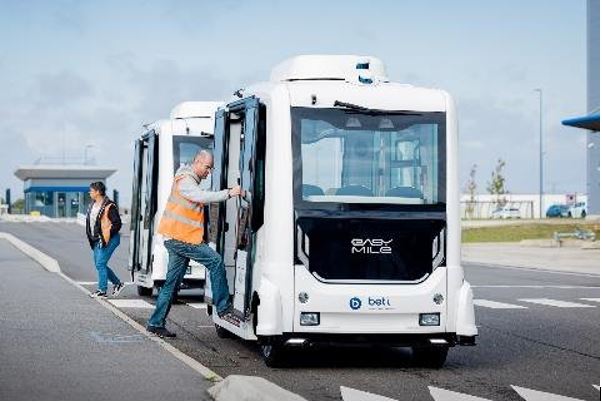
Fully L4 automated shuttles for passenger transport with Hypervision center 400km away
Vision
- Shuttles with full L4 with no safety operator on board
- In Off-Road situation
- In a closed area with mixed traffic of a normal industrial site
- With no supervision on site but a hypervision centre at around 400 km away
- Enhance the wellbeing of employees with smooth mobility services with as low down time or service interruptions as possible
- Free of charge usage for all, No prior booking // ride on the spot
- Safety Operators and hypervision recruited and trained
- Hypervision remote center installed at 400 km away
- Process between remote and field operations implemented
- After a phase with SAFETY operators, operation worked with Safety Driver On Board
- 0 Accident, 0 Incident
Fleet
2 * EASYMILE SAE-Level: 4
Target Passengers
ArianeGroup’s empoyees and visitors
The Route
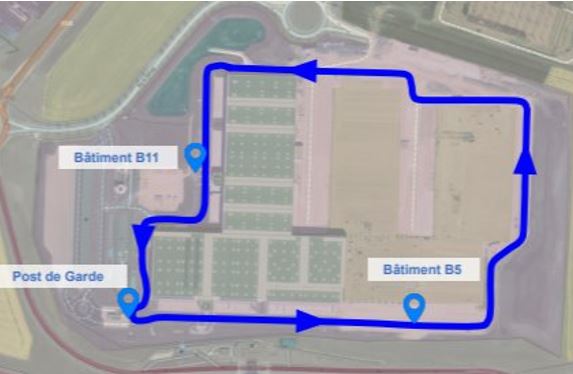
Two Easymile shuttles operated on a 1.6 km route with three stops (parking entry, building 5, building 11). Detection zones helped prevent interference with truck loading/unloading.
Key challenges
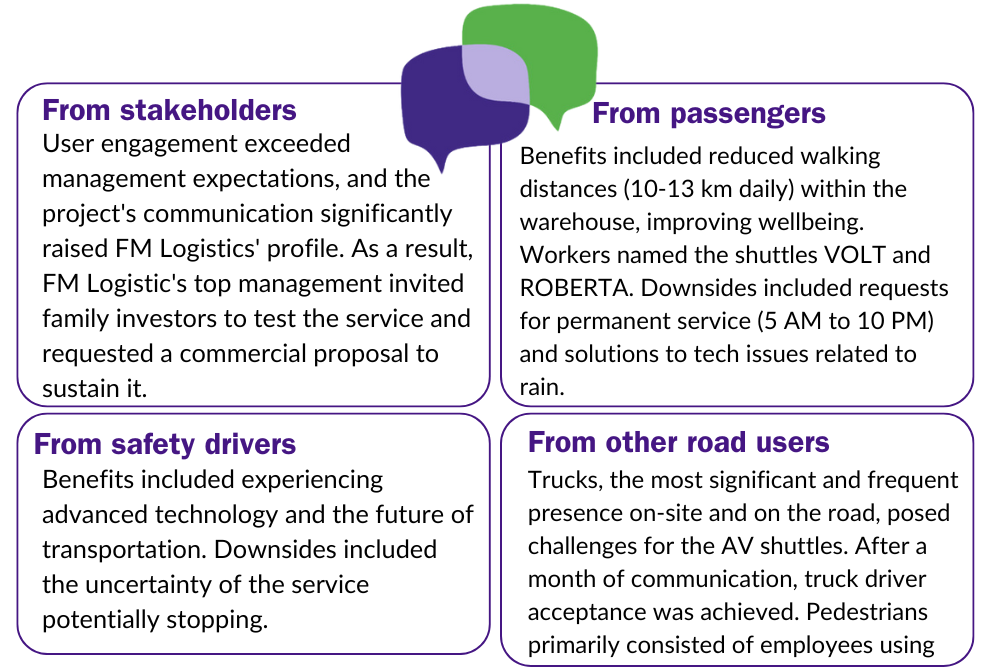
Challenges & Recommendations
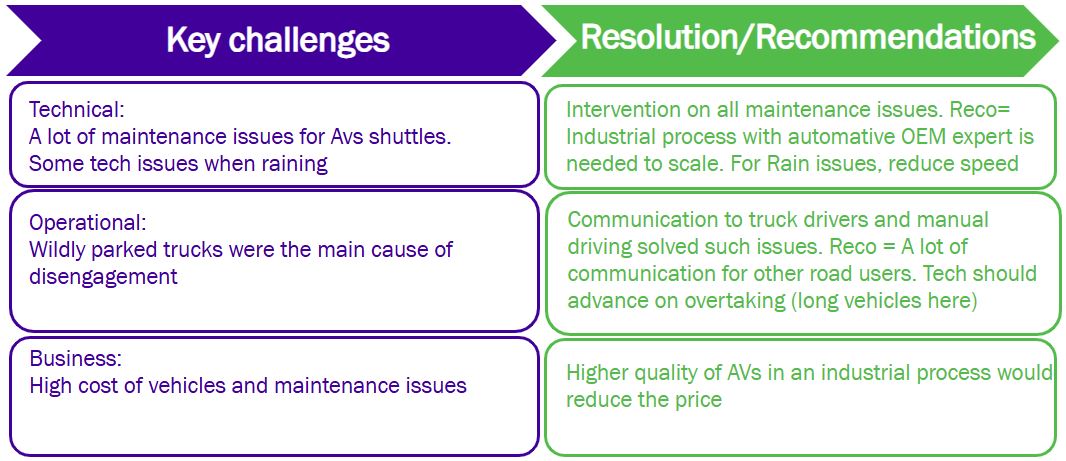
Use Cases
UC 1.1: Automated mobility in Cities under normal traffic & environmental conditions
UC 1.2: Automated mobility in Cities under complex traffic & environmental conditions
UC 1.3: Interfacing non automated vehicles and travellers (including VRUs)
UC 1.6: Mixed traffic flows; AVs and non-AVs mixed in the same traffic flows
UC 1.7: Connection to Operation Centre for tele-operation and remote supervision
UC 3.2: Big data / AI based added value services for Passengers mobility
UC 3.4: Automated services at bus stops
Local Ecosystem

Legacy
Off-road sites like this—with controlled driving rules, low speeds, confined areas, and short ODDs of 1.5 to 5 km—are common in major industrial settings. The success in Escrennes demonstrates that similar setups could be replicated elsewhere.